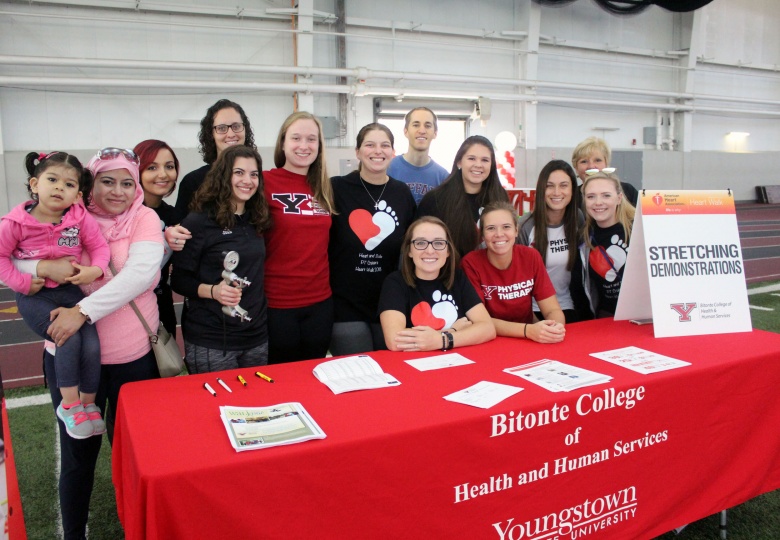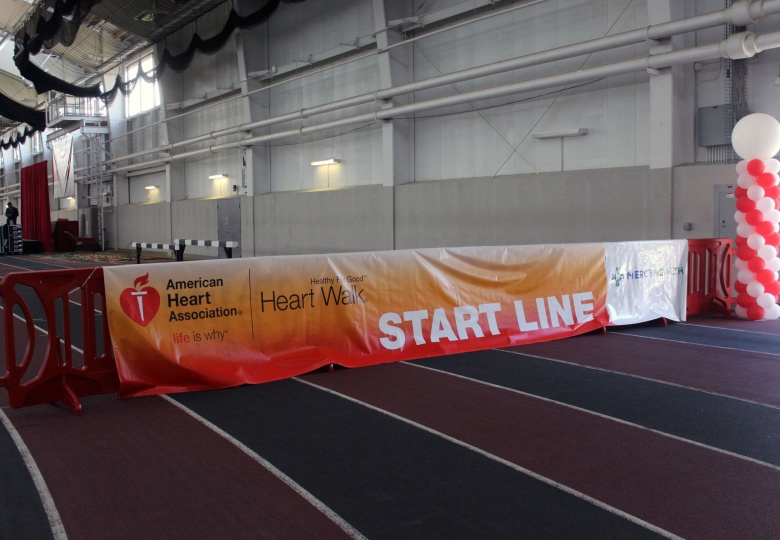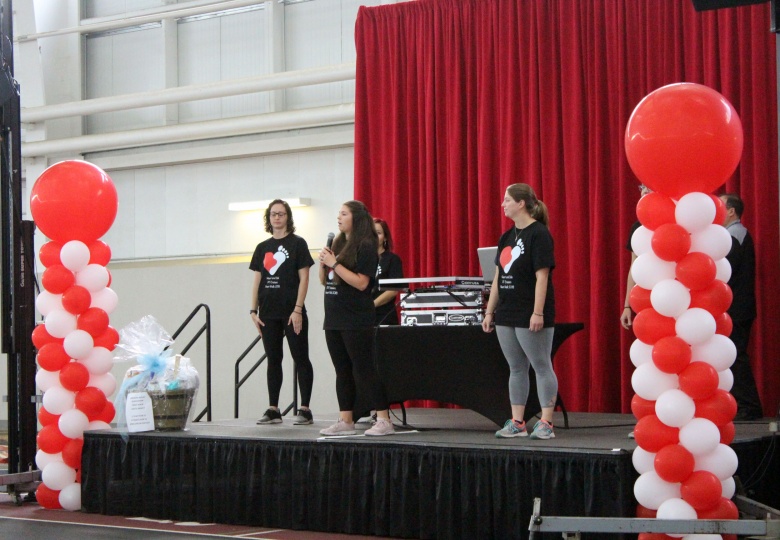By Frances Clause
The local chapter of the American Heart Association celebrated advancements in treating heart disease and strokes through its Mahoning Valley Heart Walk on Sept. 29.
For the 25th year, donors, volunteers and walkers gathered at the Watson and Tressel Training Site to make the commitment of leading a heart-healthy life and help fund innovative research for cardiovascular disease.
Last year, participants raised more than $200,000 to support the heart association’s mission of striving to save and improve lives.
This year, $116,000 of the $300,000 goal has been reached so far, with the top fundraising company being Mercy Health at $23,948.
Andrew Reid, vice president of heart, lung and vascular services at Mercy Health, said he was honored to be the chairman of the walk and thanked participants for being there.
“After the Heart Walk inception of 1993, mortality rates from cardiovascular disease and stroke have plummeted over 45 percent,” he said. “Part of this is because of the work everyone puts into raising funds.”
Reid continued by sharing statistics of how heart disease and stroke affects Ohio and the U.S. population.
“Heart Disease is the nation’s number one killer, stroke is number five, and 37 percent of all deaths in Ohio are caused by these two killers,” he said. “By being at the walk, people are making themselves, their families and the valley healthy for good.”
Youngstown State University’s Bitonte College of Health and Human Services (BCHHS) was at the walk to promote health and well-being and raised money through their sponsorship.
Sam Kulifay, a senior biological science major, said it’s important for people to attend the heart walk to gain awareness of how to take precautions to ensure a longer, happier life.
Kulifay was chosen by the American Heart Association and the Committee on Scientific Sessions Program to present research at Scientific Sessions 2018 in Chicago, Ill., from Nov. 10 through 12.
“I spent my summer analyzing cardiac MRI’s using a new software system,” Kulifay said. “The software that I use measures levels of strain on the left ventricle of the heart, and these levels are an early indication of dysfunction in the heart muscles.”
Kulifay compared the average levels of left ventricular strain in a healthy group of people versus a group of obese people and found obese patients had impaired left ventricular strain levels.
“This research impacted my life in so many ways,” he said. “It has given me a plethora of information about health care and has shown me the importance of new diagnostic techniques so the patient and doctor can work toward a successful treatment.”
Patty Davis, a graduate physical therapy student, said BCHHS encouraged people to get up and move to reduce the chances of developing heart disease.
“I’m also personally here to support the memory of my uncle on my dad’s side,” she said. “I never got to meet him because he had a heart attack at the age of 19, and doctors said he had the heart of a 78-year-old.”
Davis and the other physical therapy students led a stretch for participants before the walk began.
Walkers enjoyed a scenic two-mile route around YSU’s campus.
Photos by Frances Clause/The Jambar




